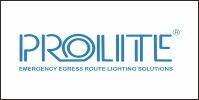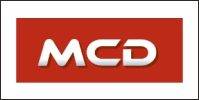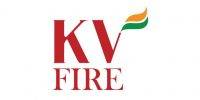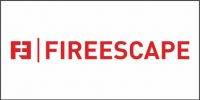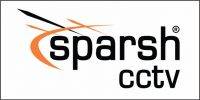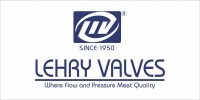 Most employees who feel at ease at their workplaces perform their tasks with a positive attitude and motivation. Satisfied teams are characterised by a higher quality of work and achieve their objectives faster and more effectively. Ergonomically designed office equipment and optimised working processes decisively contribute to well-being in everyday working life. Latest trends and innovative products and methods will be presented at this year’s A+A, the International Trade Fair with Congress for Safety, Security and Health at Work in Düsseldorf. Ergonomics at the workplace, however, also make sense from an entrepreneurial point of view: they reduce musculoskeletal diseases in employees and this means fewer lost days and higher productivity.
Most employees who feel at ease at their workplaces perform their tasks with a positive attitude and motivation. Satisfied teams are characterised by a higher quality of work and achieve their objectives faster and more effectively. Ergonomically designed office equipment and optimised working processes decisively contribute to well-being in everyday working life. Latest trends and innovative products and methods will be presented at this year’s A+A, the International Trade Fair with Congress for Safety, Security and Health at Work in Düsseldorf. Ergonomics at the workplace, however, also make sense from an entrepreneurial point of view: they reduce musculoskeletal diseases in employees and this means fewer lost days and higher productivity.
Ergonomic Chairs and Business Furniture
In modern society man mostly lives a sedentary lifestyle. Our bodies, however, are not designed to function for sitting permanently. A passive seated posture weakens the body’s supporting muscles and vertebral disks are exposed to an unbalanced load. This leads to tensions, pain, inflammation and limited mobility. Furthermore, the pressure exerted on the nerves negatively impacts digestion, respiration and concentration. As a result – people’s well-being decreases and their ability to perform drops.
“This is why we need furniture that supports the body in its healthy position with the highest degree of mobility possible,” says Malte Lenkeit, Ergonomics Consultant at the German office furniture manufacturer Dauphin. “Office chairs should keep the vertebral column in its natural double-S shape and support an upright position – by an automatic inclination of the upper part of the chair and a permanent counter pressure produced by the backrest in the process.”
According to studies by the Federal Institute for Occupational Safety and Health (BAuA) – included in its publication “Arbeitswelt im Wandel” (Working World undergoing Change), issue 2018 – back problems continue to be among the most frequent symptoms. In the workforce survey significantly more women (63.5 %) than men (39.7 %) stated that they suffered from neck and shoulder pain. Lower back pain was reported by 51.4 % of women and 44 %
of men. According to this study, musculoskeletal disorders account for a Euro 17.2 billion loss of production in companies. As a result, all employers should be interested in preventing such problems.
This is where “AGR – Aktion Gesunder Rücken” – the Healthy Back Campaign – comes in handy. It will be taking part in A+ A for the first time presenting its own quality seal “Geprüft & empfohlen”. “It is independent and only awarded to especially back-friendly products,” explains Detlef Detjen, Managing Director at AGR. At the trade fair in Düsseldorf the focus will
be on the certified AGR concept “Industriearbeitsplatz” that allows industrial workplaces to be adapted to ergo-dynamic requirements.
Avoiding Safety Risks
While office jobs are associated with plenty of sitting, many workers on assembly lines or in shipping departments have to stand more than seven hours a day. This adds up to over 1,800 hours a year. Hard floors increase the physical stress by one-sided strains which, in turn, increase pressure on joints and cause long-term illness.
Discussions about the future of work and workplace 4.0 centre around creating optimum conditions for all, for instance for mobile standing. Here special floor mats can have a supportive effect. “Mats with high damping properties save the joints while reducing noise levels. They are in high demand in logistics centres or in dry areas of industrial production,” explains Martina Baumgärtner, Head of the German service office of Ergomat, a manufacturer of products for various work areas and with different functionalities.
Some mats come with a surface designed to catch oil, chemicals, chips or other dirt particles at industrial workplaces to prevent workers from slipping. Other products rest on little webs or suction cups. Even when liquids are spilled these ensure secure footing since the liquids can drain through the raised design. Mats with coloured coatings mark walking areas or danger zones in manufacturing areas or halls. Silver-coated products can even address the issue of maximising brightness in windowless production areas and halls as they reflect three times more light than dark mats.
The Future belongs to Collaborating Robots
Industrial workplaces increasingly rely on robots as colleagues, in order to spare humans straining jobs such as lifting heavy loads or working overhead. In the automation industry the future belongs to collaborating robots as the missing link between a purely human workplace and fully automated production.
“There is particular importance attached to performance and force monitoring,” says Dr. Matthias Umbreit, Head of the Machines, Robotics and Wood Working Department at the Wood and Metal Trade Association. He goes on to elucidate: “Robots that are specifically designed for human-robot collaboration (HRC) detect the contacts between a robot or tool and a person and can therefore switch off the robot before injuries occur.”
So far HRC systems have made inroads in the automotive industries and OEMs, precision mechanics and electrotechnical production or in the chemical and plastics industry. Possible industrial applications for robot systems will be presented by Universal Robots, a company represented at A+A for the first time.
Planning for Healthy Workplaces
Since human beings – by nature – do not perform consistently over hours, it makes sense to support them ergonomically. If workplaces are planned and designed accordingly, staff performance can be increased. Simple maths show what this means: a 5% performance increase of a worker with a gross income of EUR 3,000 may mean that a EUR 1,500 investment in an ergonomically designed workplace pays off in ten months.
One way of establishing the need for ergonomic improvements is EAWS, the Ergonomic Assessment Worksheet. It was developed by the German MTM-Vereinigung e.V. and works like this: during an on-site inspection, experts analyse the workflow at a given workplace. This involves capturing the static body postures and forces impacting the whole body, upper body or fingers. The necessity for ergonomic improvements is assessed by means of a risk score.
“The modular MTM-HWD system helps us to describe workflows. HWD is the acronym for Human Work Design,” says Dr. Thomas Finsterbusch, Head of the MTM Academy. With the help of pictograms the movement of hands and arms as well as eyes are described. This way all processes can be assessed in view of their ergonomic strain – when workers have to strongly twist their joints, for example.
This is not the only technology to be presented at the exhibition stand of the MTM-Akademie at A+A 2019. Another topic covered will be the digital capturing of motions (3D simulation and motion capture). For motion capture a person’s individual extremities and trunk are equipped with sensors to supply a host of data. Evaluating the captured data experts can see which motions increase or decrease risks. These are then directly incorporated into the design process of healthier workplaces.
Open Office-Scapes – New Requirements
Nowadays, run-of-the-mill offices are a thing of the past. The “Deutsches Netzwerk Büro” (German Network Office), a society embedded in the INQA – New Quality of Work Initiative of the Federal Ministry of Labour, will address the topic of open-plan office-scapes “Offene Bürolandschaften”. These are popular in the start-up community or creative industries.
“Employees here have a choice of workstations for different tasks that either require high concentration or personal exchange. This is why they only work at the same workstation temporarily – which requires designs adapted to these needs,” says David Wiechmann, Chairman of “Deutsches Netzwerk Büro”.
Therefore, desks shared by several members of staff should be height adjustable and equipped with a display with precise height adjustment. Chairs would ideally have automatic weight recognition. Everything should be intuitive and adjustable if possible.
Important pointers – from the initial idea for sustainable office concepts to the design of the working environment – can be found in the publication “Büroraumplanung – Hilfen für das systematische Planen und Gestalten von Büros” (Office Planning – Aids for Systematically Planning and Designing Offices) of the German Statutory Accident Insurance DGUV. This will be represented at a stand at A+A 2019 also shared by IFA – the Institute of Occupational Safety within DGUV as well as the Employers’ Liability Insurances and accident insurance companies.
Indoor Climate – a Factor of Growing Importance
Indoor climate is gaining increasing importance for health and safety at work. “A relative air humidity of 40% to 50% is ideal,” says Dominic Giesel, Marketing Director at Condair Systems who adds: “A relative air humidity of below 40% keeps viruses active for hours and spreads them through the entire building – the danger of infections rises.” In winter the relative air humidity often goes down to as little as 10% in many offices. Once the air is too dry, our mucous membranes dry out, our eyes start burning and our voice fails us.
Direct room humidification is possible in all rooms today – in new and old buildings, in big and small rooms. Here sanitised water is sprayed as a visible mist into the room via hand-sized nozzles connected to the water supply. This procedure is suited to large rooms such as open-space offices used by insurance companies or call centres. Here the need for humidity is high since employees talk a lot and their vocal apparatus requires moisture. The situation is similar in jobs where people spend long periods in front of monitors. Dry air dries up the tear ducts and increases the risk of conjunctivitis. According to studies carried out by Barmer Ersatzkasse, to the tune of eight million people suffer from this clinical pattern called “office-eye-syndrome”.
A study conducted by the Fraunhofer Institute “Luftfeuchtigkeit am Büroarbeitsplatz” (Air Humidity at the Office Workplace) dating back to 2014 shows that the humidification of indoor air by means of very fine aerosols that are visible and also perceivable in the vicinity of the humidifiers, are perceived as positive. 38.5% of the people polled welcomed the method and rated the indoor climate as refreshing and performance-enhancing. In industrial sectors optimal air humidity helps ensure quality. It contributes to avoiding electrostatic charging – which is of major importance in the electronics industry. “There are no legal provisions governing air humidity,” explains Giesel who goes on to say: “But the rising significance of corporate health management moves the importance of air humidification more and more centre stage.” At A+A Condair will exhibit solutions such as direct room humidification.
For more information on A+A 2019 and its exhibitors go to: http://www.AplusA.de












